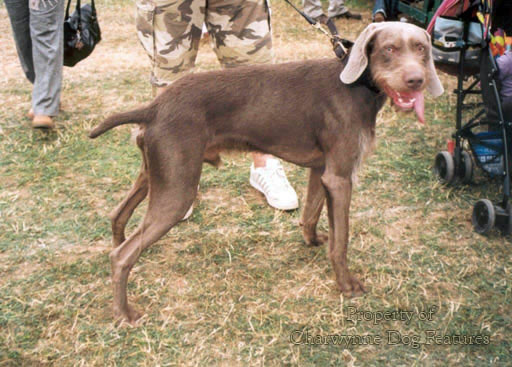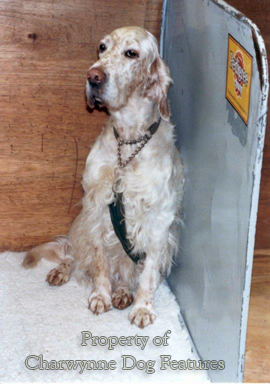774 GROWING YOUR OWN-PROTECTING NATIVE GUNDOG BREEDS
GROWING YOUR OWN
by David Hancock
 Native Breeds Admired
Native Breeds Admired
Britain has every reason to be proud of her contribution to the breeds of gundog in the world. Our sportsmen, supported by the landed families, developed the renowned breeds that are still active in the field today – pointers, setters and spaniels – although some of these breeds sadly are little used in the shooting field. If you want sheer style on the grouse moor, a dog that excels at flushing, starting or springing game, or a specialist retriever for picking up, our sporting breeds are still supreme. But if you want a dog that is capable of hunting game, pointing out where it is and then retrieving it to hand when it is shot, then you must choose a breed from overseas. It is strange that British gundog breeders, revered the world over, have not responded to the contemporary demand for all-round skills in a gundog. As the paintings of George Morland, James Barenger and Ben Marshall illustrate, our Pointers once used to retrieve, as did some setters, as the Paul Jones painting of 1859 shows. Dog breeders are not usually so slow to respond to the market place, as our exports of gundogs in past centuries demonstrate. 
Popularity has its Price
Modern living presents many problems to sporting dogs, ranging from contemporary lifestyles that do not suit such active creatures to unwise unskilled breeding, often in the unashamed pursuit of money. But for some breeds, especially some gundog breeds, there is a special danger from their being appreciated, wanted, coveted and therefore over-bred – their sheer popularity. The sport of shooting is thriving; it is vital that the hard-working dogs providing irreplaceable support in the field to this sport are well-served, not just by trainers and shots once mature, but by their breeders, breed clubs and parent bodies. It would be good to see an energetic organisation like the BASC extending their remit still further in the promotion of healthier, better-bred and sounder gundogs, as well as the conservation of our native minor gundog breeds.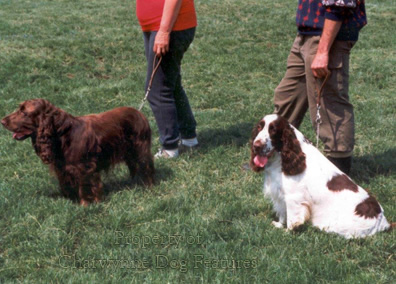
Challenge to British Breeds
If you look at the annual registrations of gundog breeds with the Kennel Club (KC), you can quickly see the fairly recent popularity nowadays of the hunt, point and retrieve (HPR) breeds from the continent. In the first decade of the 21st century, twice as many German Short-haired Pointers (GSPs) were registered here as our own native breed of Pointer; 1,000 more Hungarian Vizslas were registered than the combined totals of our Clumber, Field, Sussex and Irish Water Spaniels; more Weimaraners were registered than all our native setter breeds put together. More Italian Spinoni were registered than the combined totals of our Curly-coated Retrievers, Irish Red and White Setters and two of the minor spaniel breeds. Less than 50 years ago, only around 540 GSPs, 330 Weimaraners and under 100 Hungarian Vizslas were registered each year and no Spinoni. But nearly four times fewer Irish Setters were registered in 2000 as in 1975. Is this entirely down to sheer merit in the newly popular foreign breeds or an indication of our fondness for the exotic, the casual pursuit of novelty or copycat fashion-following?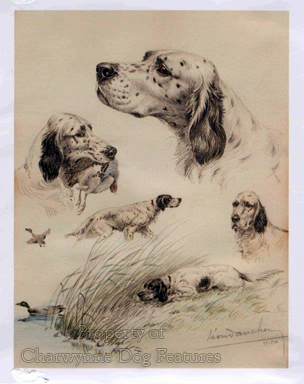
Native Breed Decline
Even fifty years ago, the shooting men went for British gundogs; not any more. The preference for 'hunt, point and retrieve' breeds has largely caused this, but our national fascination with all things foreign plays a part too. The sustained popularity of the Labrador and Golden Retrievers and the English Springer and Cocker Spaniels mustn't be allowed to mask the worryingly small numbers of far too many of our native gundog breeds. There is also a regrettable fickleness in the fancying of gundog breeds. Taking the Gordon Setter as an example of this: in 1908, 27 were registered; in 1927, 74; in 1950, 100; in 1975, 255; in 1985, 586; in 2001, 288; in 2009, 192 and 306 a year later. Such comparatively wide fluctuations in a small breeding population calls for extraordinary shrewdness from breeders if top quality dogs are to be bred and a virile gene pool maintained. Another of our native gundog breeds, the English Setter is similarly declining, with 240 being registered each year either side of the first World War, as many as 1,700 in 1980, a drop down to 768 in 2000, then further drops in 2009 (295) and 2011 (234). To lose 1,500 registrations in 30 years is a dramatic loss of patronage and of enormous concern to breed enthusiasts. This cannot be put down purely to changes in shooting habits.
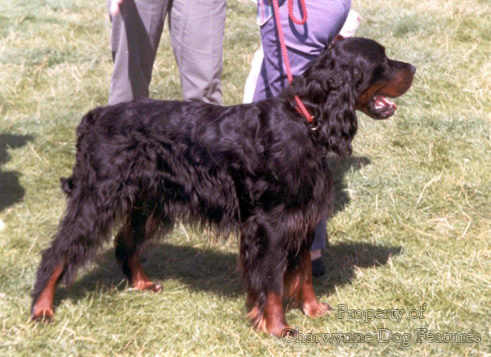 Fashioning Fame
Fashioning Fame
If you look at the list of the twenty most popular breeds of dog, as registered with the Kennel Club in 2011, you see a wide range of types. There are terrier and spaniel breeds, gundogs and herding dogs, foreign breeds and British ones, Toy dogs and working breeds. The Labrador Retriever easily heads the list, with nearly 40,000 registered, as in the previous four years. The Golden Retriever and the Cocker and English Springer Spaniels feature high in the popularity stakes, with all three breeds proving popular overseas too. The fashion-following of the dog-owning public can be seen in the changing fortunes of two British breeds: the Cocker Spaniel and the Fox Terrier. In 1910, over 600 Cockers and 1,500 wire-haired Fox Terriers were registered. The wire-haired Fox Terrier was top dog from 1920 to 1925 and again from 1928-1935. It was still the third most popular breed half a century ago. Eighty years ago it was the third most popular breed in the US too. Now less than 700 are registered here annually, only one third of the numbers registered in 1956.
The Cocker Spaniel was top dog here from 1936 to 1953, with over 7,000 registered each year in the 1950s. In the US in 1977, as many as 53,000 were registered, the breed having been top there even thirty years before. The registrations here of Cockers went up by 1,600 between 1989 and 1998, with the breed moving into third place here in 2000, with 13,000 registrations.
Success Stories
The gundog breed success story of the 20th century here was undoubtedly that of the Labrador Retriever, with the Golden Retriever, the Cocker Spaniel and the English Springer not far behind. In his Dogs since 1900 of 1950, Arthur Croxton Smith wrote: "The year 1903 was memorable in the history of Labradors, which had hitherto been little known except among a few select sporting families...I must admit that before 1903 I had never seen one...Then in that year a class was provided for them at the Kennel Club show at the Crystal Palace." In 1908, 123 were registered, in 1912 - 281, in 1922 - 916, by the 1950s 4,000 were being registered each year, in the 1980s - 15,000 a year, rising to nearly 36,000 in 1998 and over 45,000 a year more recently. No other breed in the history of purebred dogs can match that rise in popularity. This degree of popularity calls for visionary breeding control, both a voluntary one at breeder level and firm leadership at the top, both at breed club and KC level. Sadly, this has not been entirely successful and far too many unsound unhealthy dogs have been born – and bred from, to respond to public demand. The breed and indeed the public deserve better.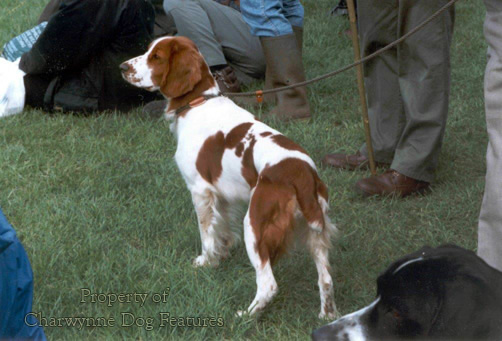
Threat from Abroad
Is there a need to restrict the often whimsical way in which fresh foreign breeds are imported into this country? Coming along behind the German short- and wire-haired pointers are the Stichelhaars and the Langhaars; behind the Large Munsterlander is the small variety and then there are the French Braques and Epagneuls, as well as the Dutch dogs: the Stabyhoun and the Drentse Patrijshond, with the Italian Spinone and Bracco, the Portuguese Pointer and the Slovakian Rough-haired Pointer already imported. I am full of admiration for these breeds and have seen many of them at work in their native countries. I’d like to see talented well-bred specimens from those breeds gracing our shooting fields but I wouldn't want them to gain ground here at the expense of our own breeds. We can be forgiven for fancying foreign breeds – but not at the expense of our own. Let’s make our own better!

